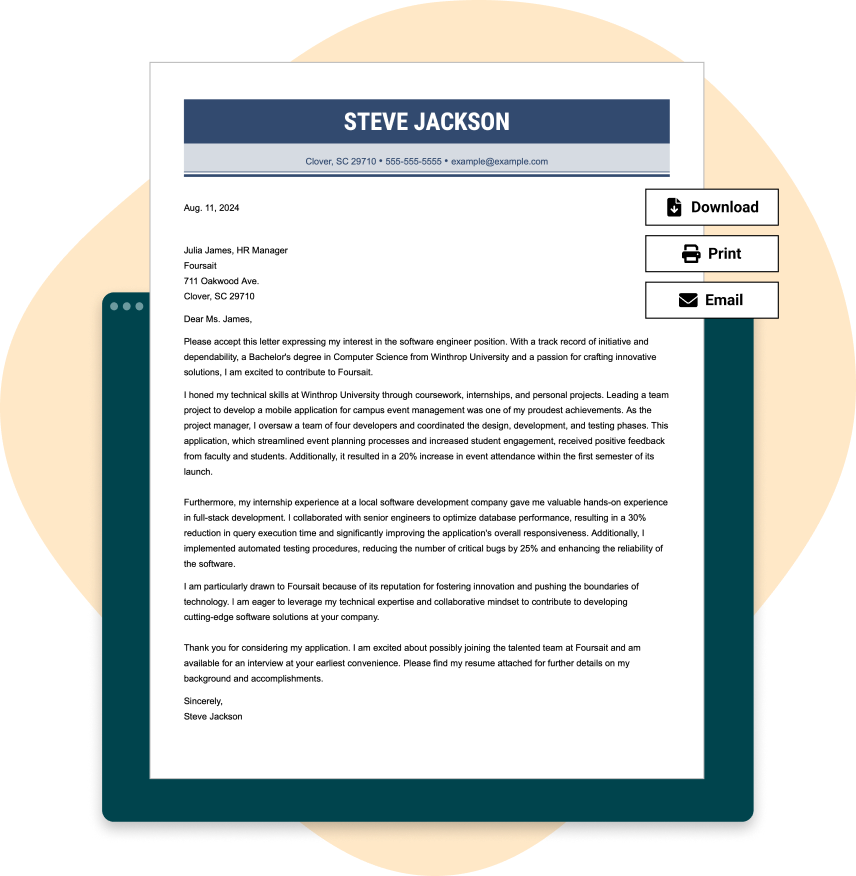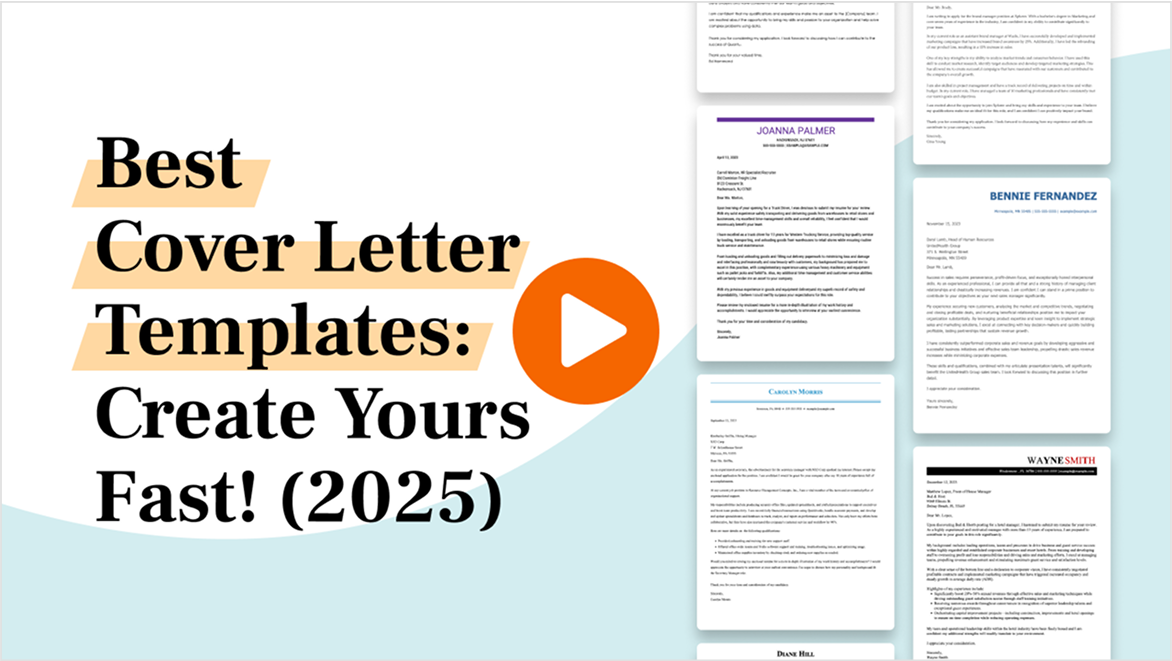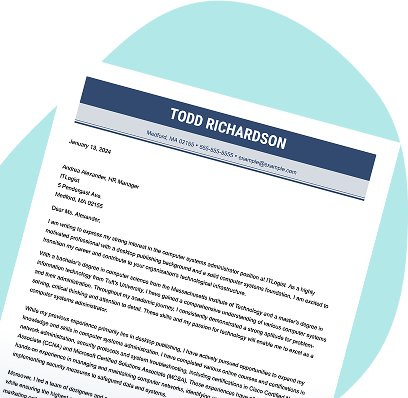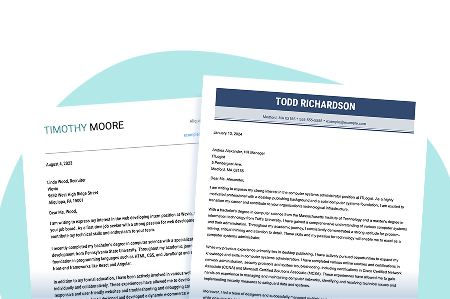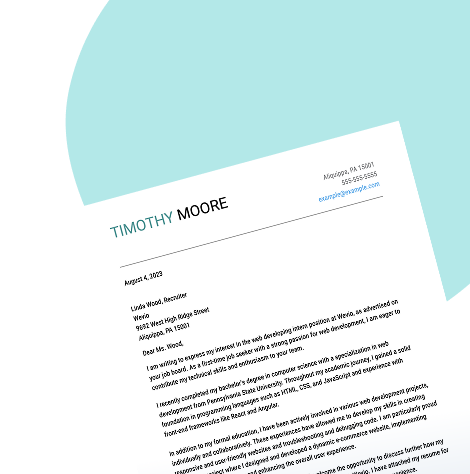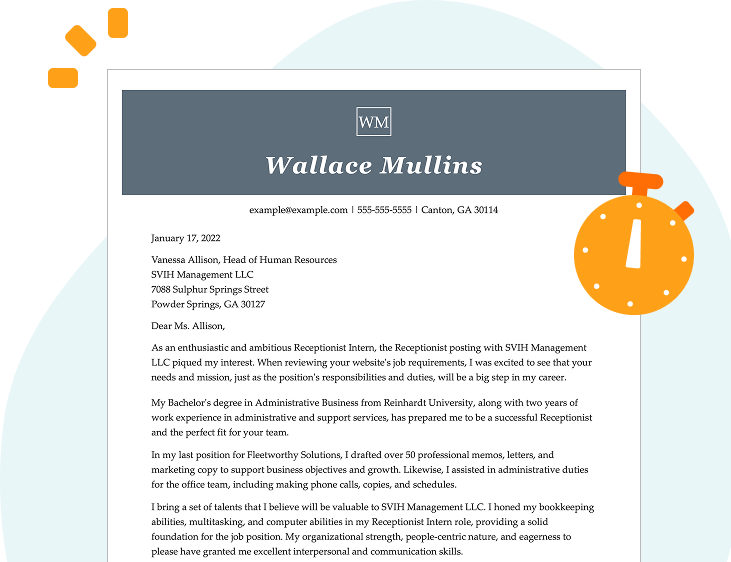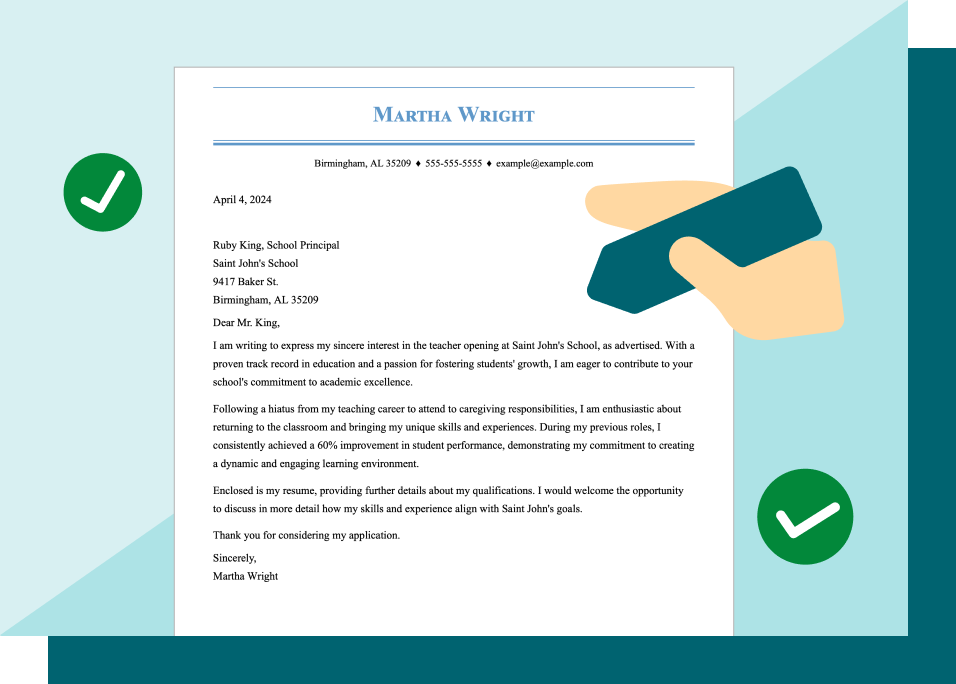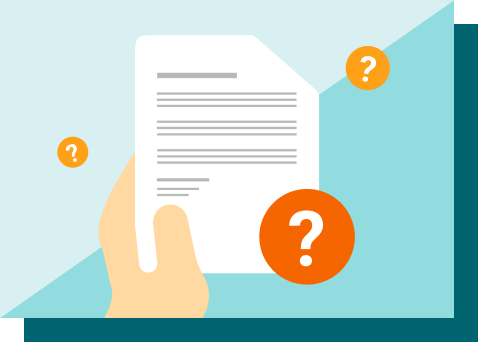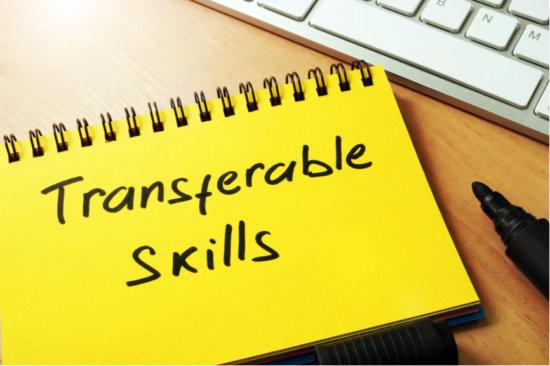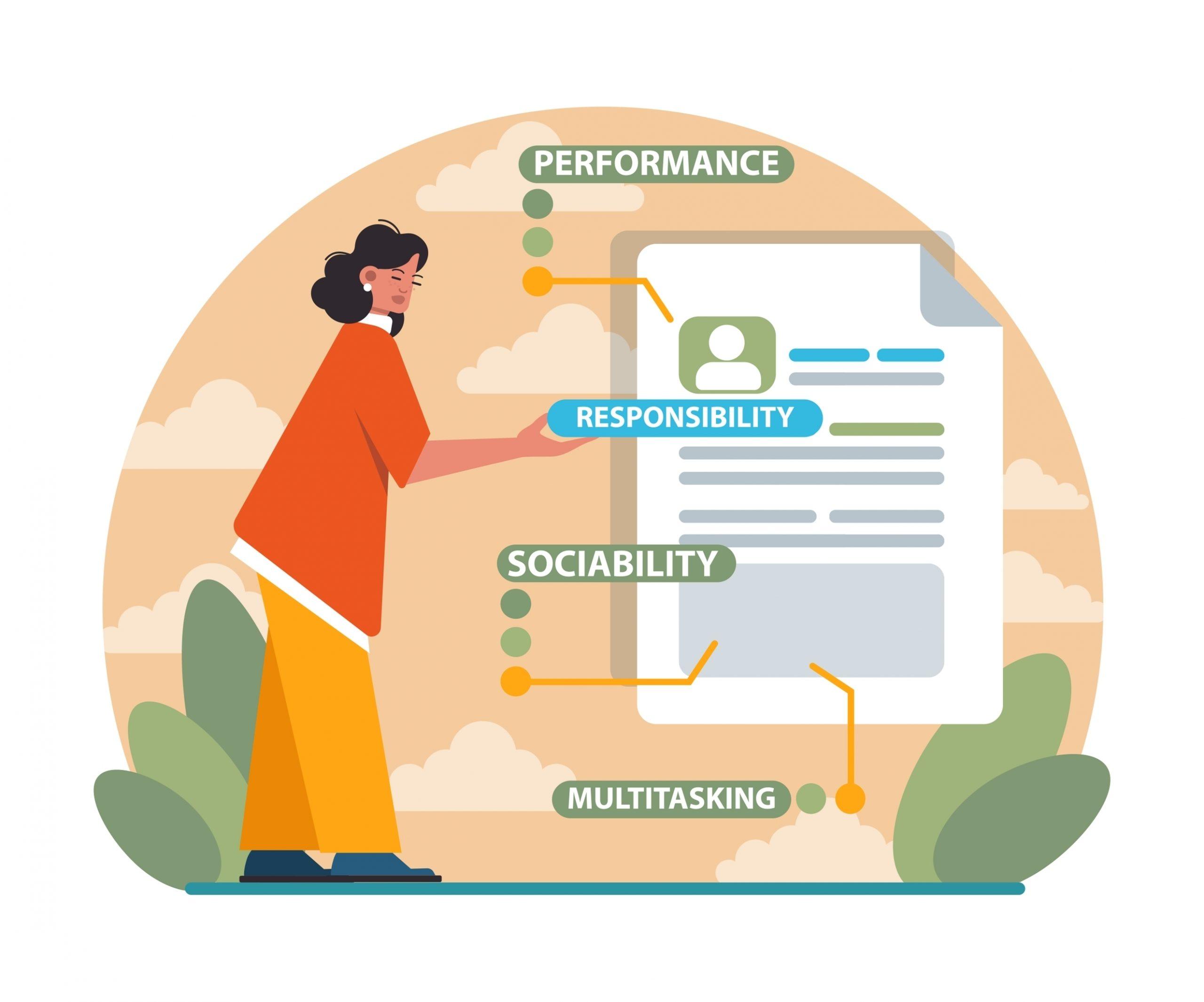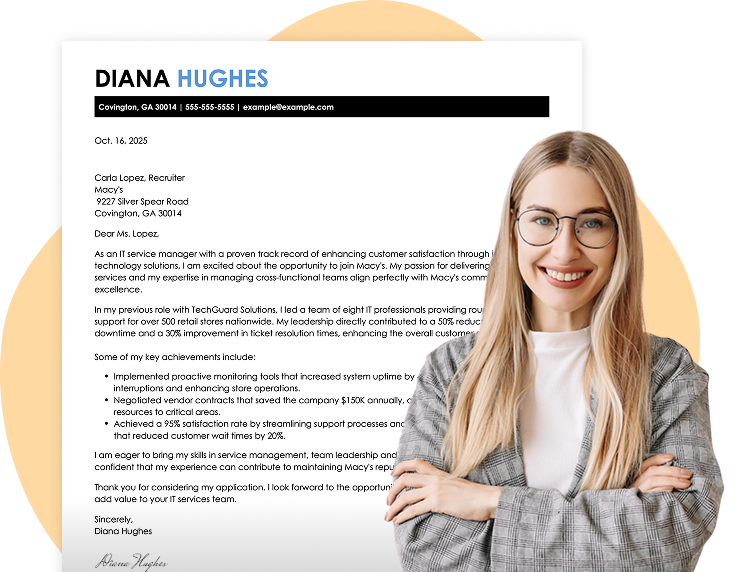Make a Cover Letter in 3 Simple Steps
Pick a template and follow the prompts
Select a design and enter your details. Our builder does the rest.
Choose customized content that fits your story
The builder features professionally written content and keywords that you can select.
Download and send to employers
Save and send as a PDF, DOC, or TXT file, anytime, anywhere.
Easily create a cover letter that gets noticed
Watch this quick video to see how our builder’s templates and smart suggestions make writing your cover letter fast and simple.
How LiveCareer’s Cover Letter Generator Works for You
Features modern cover letter designs.
Our professionally designed cover letter templates take care of the design and allow you to change the look of your document in a single click!
Catches mistakes in your letter.
Our builder checks your document for spelling and grammar errors you might otherwise miss.
Matches your cover letter to the job.
If you’re applying to multiple openings, our builder will make your life easier by tailoring a unique cover letter to each job you want.
Provides suggested text.
Writer’s block, begone! Resume-writing professionals filled our database with best-use phrases, keywords, and job descriptions you can use in your letter!
Comes loaded with customizable features.
From design to color scheme to font, you’re in complete control of all your cover letter details. That helps ensure you’ll produce a letter you love.
Our reviews speak for themselves
Cover Letter Examples for Every Career Path
Writing the perfect cover letter is easier when you have real examples as inspiration, especially if your career journey isn’t a straight line.
Explore LiveCareer’s extensive library of cover letter samples, created with our powerful builder and tailored to real-life situations. Whether you’re changing careers, seeking a promotion, reentering the workforce after a gap, or applying for your first job, you’ll find examples and templates to guide you.
Jump to the examples that fit your unique situation and start building your own today.
Frequent Searches
Prepare for job search success with our expert writers’ well-researched articles, career advice, and resume and cover letter writing tips.
Cover Letter Generator FAQ
What is a cover letter builder?
A cover letter builder is a tool that helps you write and design your document, making it easier for you to get noticed by employers!
It helps you by streamlining the cover letter writing process into a series of easy-to-follow prompts, providing stylish design options and pre-written content to use!
Should I use an online cover letter builder?
LiveCareer’s online Cover Letter Builder is a sophisticated, modern tool that will help you write a professional cover letter in minutes. Thousands of people have benefitted from using our builder, and you can too!
It’s a high-quality digital alternative to hiring professional cover letter writing services.
What is the best cover letter generator?
We put so much time and research into creating the best Cover Letter Generator on the market!
Our builder will write you a professional letter featuring the right skills for your job title and an authentic and engaging voice.
Is your cover letter generator free?
LiveCareer’s Cover Letter Generator free trial allows you to test all of its functions and customizable tools so you can try it before you commit.
However, you must sign up for a subscription to download and send your final cover letter.
Do I need a different cover letter for every job application?
Yes, every job application needs a fresh cover letter specifically targeted to it.
When your letter is tailored to the employer’s needs, you stand a greater chance of connecting with them and landing an interview. Your letter should address the unique needs mentioned in the job post or ad.
Can I make more than one cover letter with your cover letter maker?
Yes, with our Cover Letter Builder, you can make unlimited cover letters and resumes to meet your job hunt needs!
According to data from the U.S. Bureau of Labor Statistics, a job seeker who applies to 10 jobs only wins two interviews on average. So, chances are, you’ll have to produce a few crafty cover letters to earn your interviews.
Is your cover letter generator ATS-friendly?
Hiring companies use applicant tracking systems or ATS to scan resumes and cover letters for specific keywords.
We designed our Cover Letter Generator to be ATS-friendly by using readable fonts, classic design principles and an accepted cover letter format.
What should a good cover letter include?
A strong cover letter includes five sections:
- A header with your contact info.
- A personalized greeting by name.
- An opening paragraph mentioning the role.
- Body paragraphs detailing relevant experience.
- A closer expressing your enthusiasm for the position.
Personalize your letter with our Cover Letter Generator and keep it customized to each job ad for best results.
Featured in:*

*The names and logos of the companies referred to in this page are all trademarks of their respective holders. Unless specifically stated otherwise, such references are not intended to imply any affiliation or association with LiveCareer.
